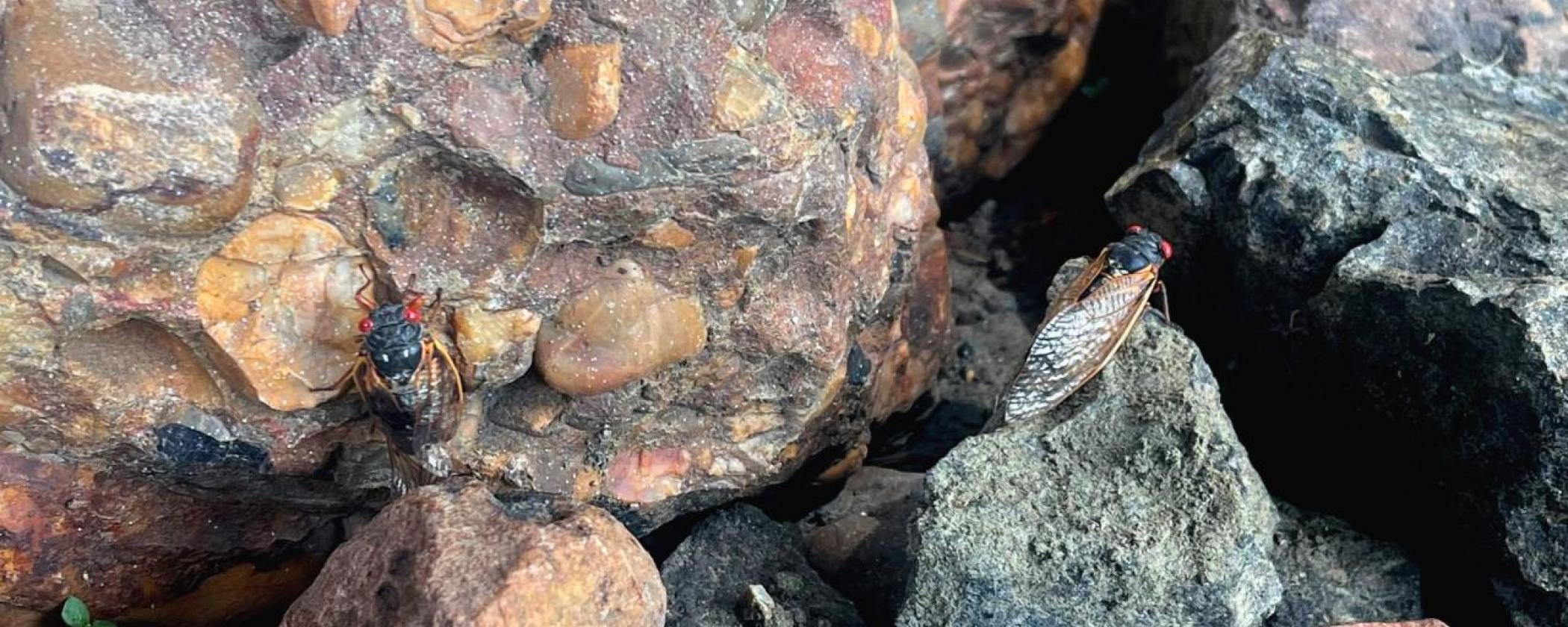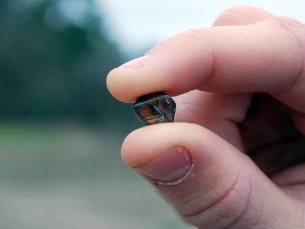
Brood XIX has emerged in Southwest Arkansas
By: Sarah ReapGreetings from Crater of Diamonds State Park! Every year, annual cicadas emerge from the ground and sound off the unofficial start of summer. If you have visited Southwest Arkansas’s famous Crater of Diamonds State Park in the last week, you know cicada season is upon us!
Cicadas are a commonly seen and heard insect in Arkansas. They range in size from two to five centimeters. They are often heard throughout the day in the summer, as male cicadas will use a vibrating membrane near the base of their abdomen to produce loud buzzing noises.
Cicadas start their life cycle as an egg in a tree. Once hatched, the immature stage of a cicada called a nymph will drop to the ground to burrow and feed for a number of years. After emerging from the ground, cicada nymphs will find a safe spot, such as a tree trunk, to affix to and shed their exoskeletons. They wiggle their way through the backs of their exoskeletons until they have fully shed their skin. These sheds can be found all over the sides of trees and buildings during a cicada emergence. Lastly, they latch onto their newly-shed skin and start to form wings.
How long a cicada stays underground varies if the cicada is an “annual” cicada, or a “periodical”. Annual cicadas, sometimes known as “dog-day cicadas,” emerge every year. These cicadas typically appear in late July or early August. They differ from periodical cicadas in size, color, and time spent underground. Annual cicadas only burrow for about two years before emerging. Periodical cicadas, on the other hand, emerge in cycles every 13 or 17 years. This year is particularly exciting and raucous, as some states will experience the emergence of both periodical broods in the same year!
The appearance of these cicadas is much different from the dog-day cicadas we are used to seeing. Periodical cicadas are smaller in size and will have a black abdomen, orange-translucent wings, and deep red eyes.
In Pike County, we will only see the emergence of the 13-year periodic brood, brood XIX, also known as “The Great Southern Brood.” This brood has already made a thunderous emergence at Crater of Diamonds State Park. Appearing by the thousands, these cicadas have made their presence known with their boisterous calls!
Periodical cicadas only emerge in certain areas and only live for a few weeks to feed, mate, and lay eggs to continue the cycle. If you plan a trip to Crater of Diamonds State Park in the next few weeks, keep an eye out for these special visitors!

